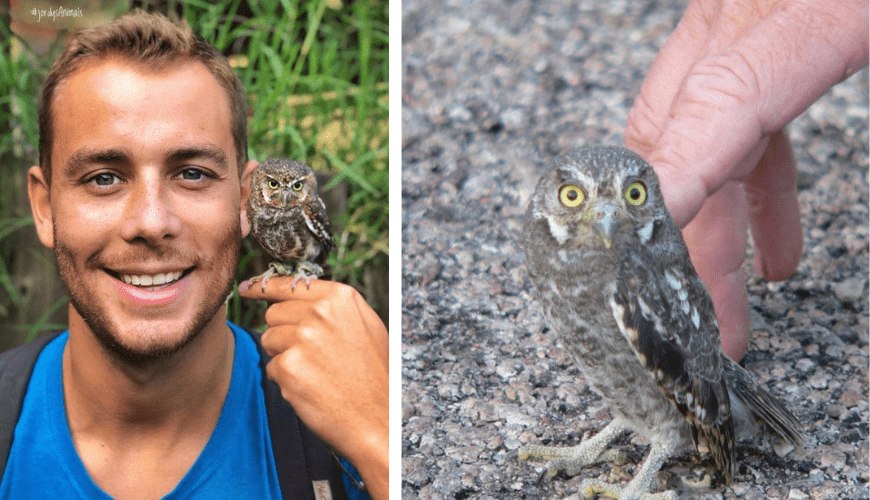A little owl peers out of a hole in a sycamore tree in West Texas as the sun sets over a dusty riverbed. The tiniest owl in the world is this one: the elf owl. The Elf Owl is a diminutive bird that weighs less than a golf ball and has remarkable wings that span less than six inches.
The Elf Owl is a skilled hunter that comes out of its tree hollow at dusk to look for food. It mainly hunts beetles, crickets, spiders, and sometimes lizards or mice. When it catches a scorpion, it removes the stinger and keeps it in its nest to eat later. This tiny bird is a tough predator!
#1

Elf owls are small ones living in forests and deserts of southwest Texas and southern Arizona. They like to make their homes in tall saguaro cacti, often using holes made by woodpeckers. Even though they are small and quiet, elf owls can be dangerous predators. Their wings make a rushing sound when they fly because of how the air moves around them.
#2

Owls can fly silently while hunting, thanks to their unique wings. They can cut through the air without generating much noise, thanks to the small bumps on the front of their wings and the soft feathers on the back. This enables them to approach their prey silently. Their delicate feathers muffle over 80% of their wings and legs’ noise.
Owls move from the United States to Mexico in October because it’s warmer there, and more insects are there in the winter. As a result, they may find enough food and endure the winter.
#3

The American Southwest sees an early spring arrival, bringing back small owls in late February or early March. These owls are eager to start their nesting season. In spring, female owls lay about one to four eggs, typically hatching in three weeks.
#4

#5

Dad initially brings food for mom and the baby owls, but as the little owls grow, mom goes hunting for food too. Elf owls are peaceful and avoid fights, but they’ve been seen attacking predators like great-horned owls. Some elf owls fly and make loud noises to scare the big owl away, and other birds join in too. Elf owls act dead if a predator gets too close until it’s safe. This makes it harder for great-horned owls to catch them for food.







